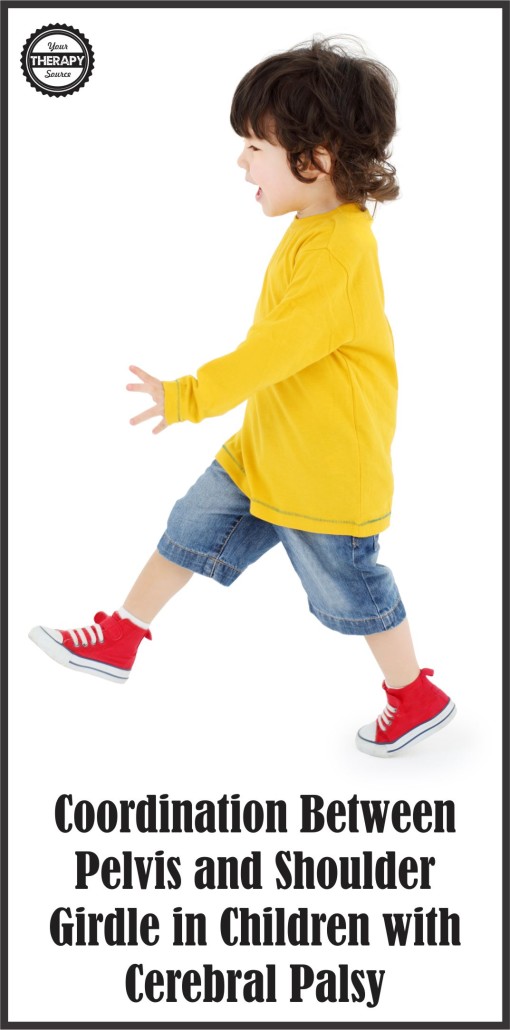Coordination Between Pelvis and Shoulder Girdle in Children with Cerebral Palsy
 Recent research from Clinical Biomechanics completed a review from the motion analysis laboratory results from 27 children with bilateral cerebral palsy to evaluate the shoulder and pelvic girdle in the three planes of motion. The control group was data from 10 typically developing children.
Recent research from Clinical Biomechanics completed a review from the motion analysis laboratory results from 27 children with bilateral cerebral palsy to evaluate the shoulder and pelvic girdle in the three planes of motion. The control group was data from 10 typically developing children.
The results indicated the following:
- the children with bilateral cerebral palsy walked with lower velocity, shorter steps, larger base of support and increased duration of the double support phase when compared to typically developed children.
- with regards to the transverse plane, the mean continuous relative phase was found lower in the cerebral palsy group throughout the gait cycle, as well as in terminal stance, pre-swing and mid-swing.
- there was a correlation between the age, gait speed and pelvis range-of-motions on the transverse plane and the continuous relative phase on the transverse plane.
The researchers concluded that children with bilateral cerebral palsy show a more in-phase coordination between the pelvis and the shoulder girdle on the transverse plane while walking. This research indicates that therapies that correct rotational abnormalities may restore coordination pattern in children with bilateral cerebral palsy.
Reference: Tavernese, E. et al. Coordination between pelvis and shoulder girdle during walking in bilateral cerebral palsy. Clinical Biomechanics. Article in press published on December 07, 2015. DOI: http://dx.doi.org/10.1016/j.clinbiomech.2015.11.020
Teaching Motor Skills to Children with Cerebral Palsy and Similar Movement
Disorders – A Guide for Parents and Professionals. Find out more https://www.yourtherapysource.com/CPmotorskills.html



